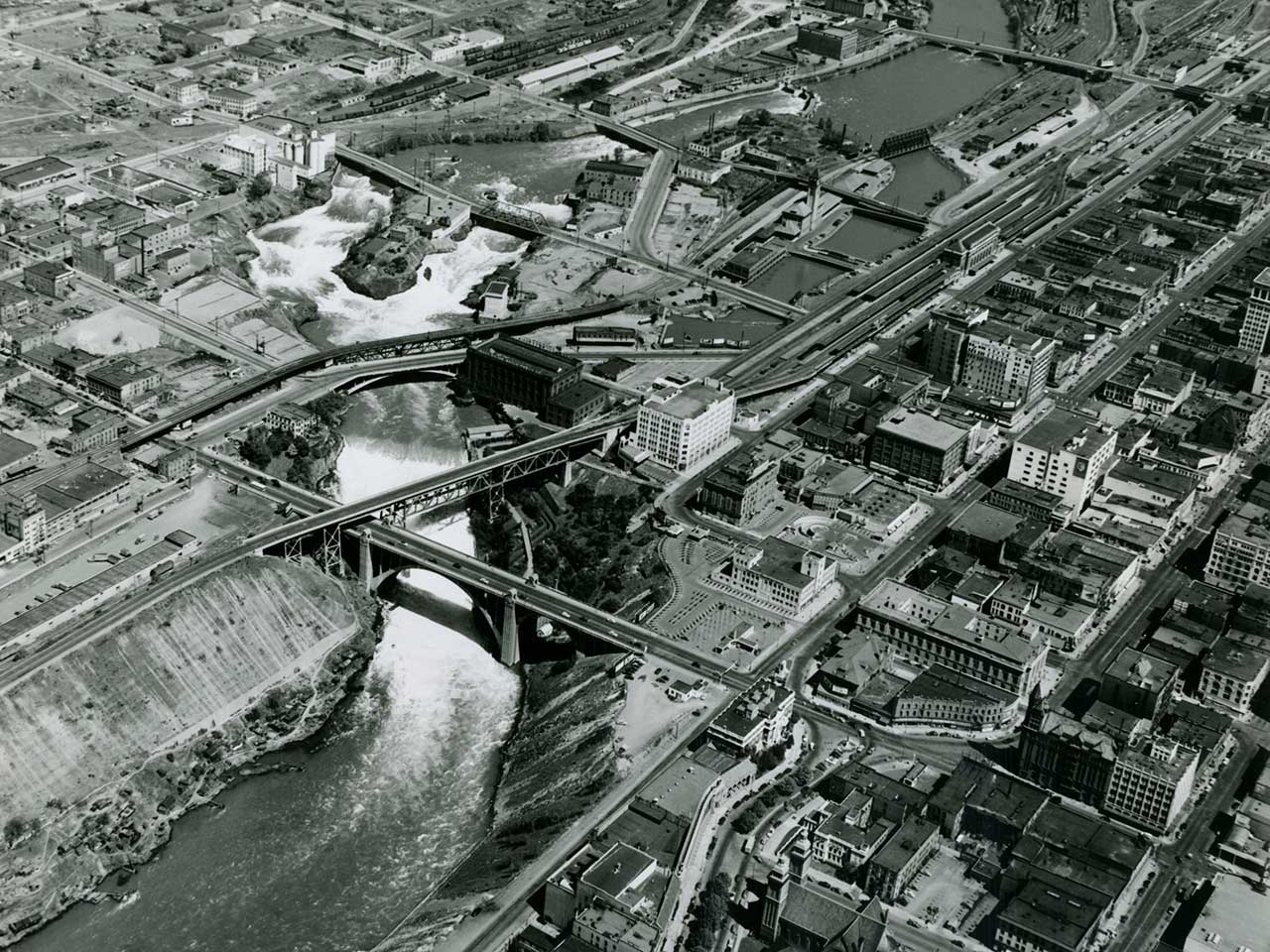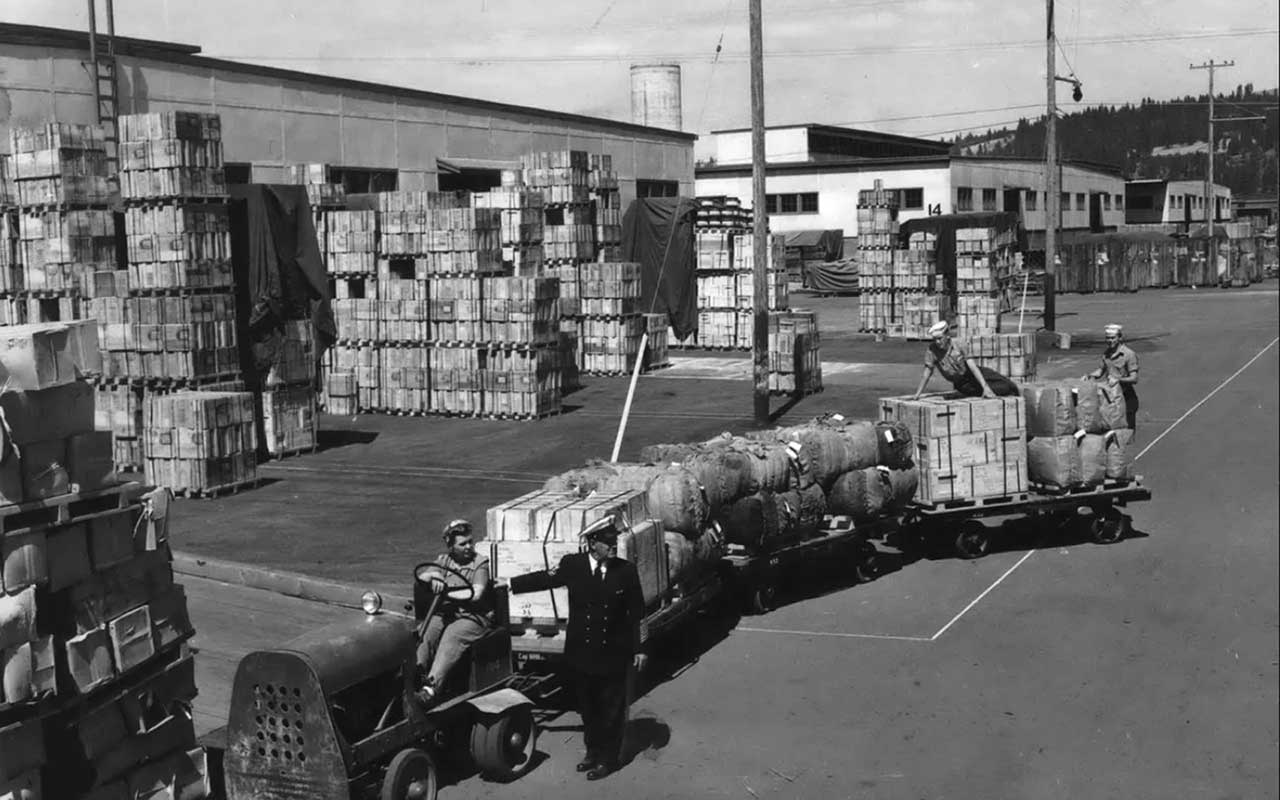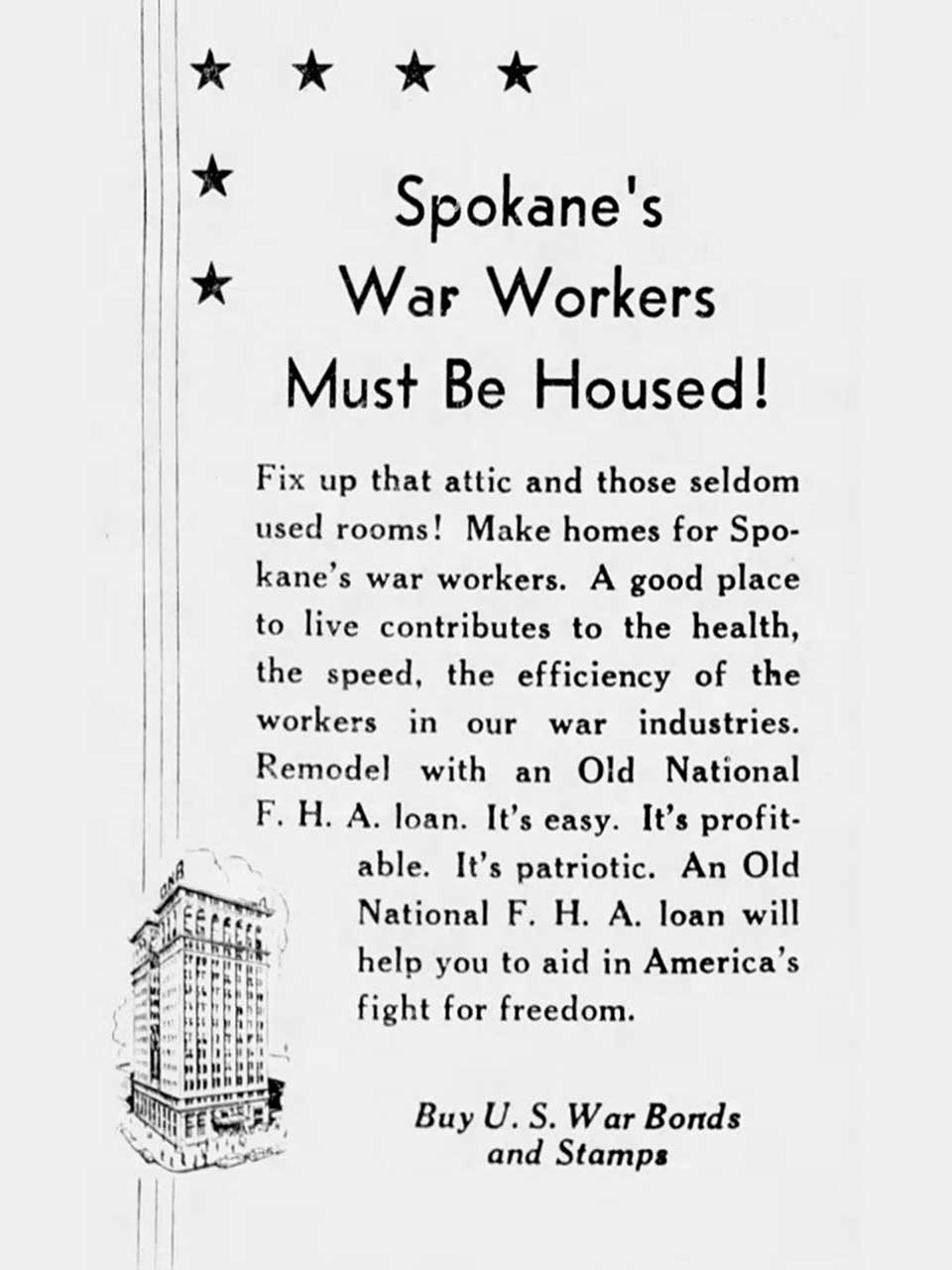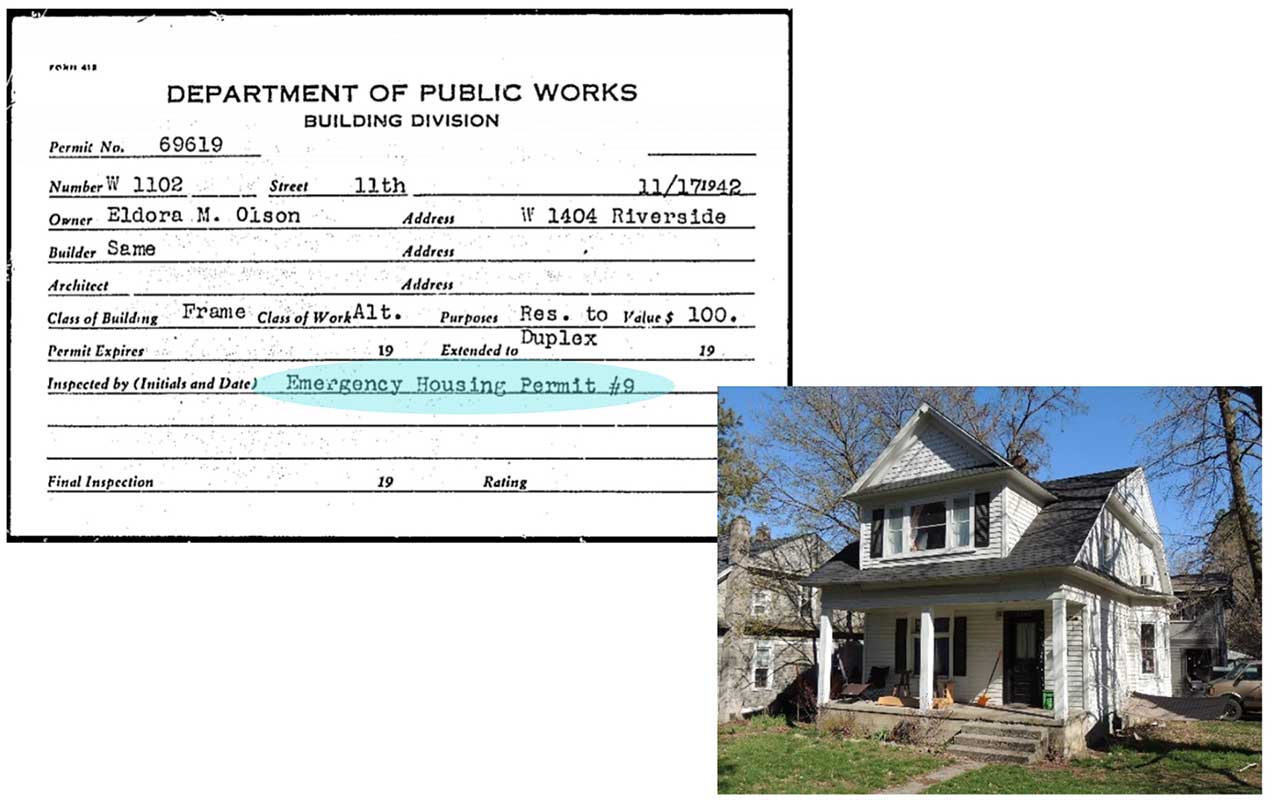
When Providing Housing Increased National Security
KayCee Downey, AICP, Planner II, 509.625.6500
Monday, February 27, 2023 at 3:15 p.m.

Spokane has its own housing journey, just as individuals like you and me have our own stories.
Population booms in the late 1800s and early 1900s led to increased development and unique housing choices like boarding houses (single-room occupancy). Following the Stock Market crash of 1929 and the ensuing Great Depression, private development of affordable housing for low-income families increased under the Emergency Relief & Construction Act of 1932. By the 1930s, Spokane was becoming a hub for trade industries – sawmills, carpentry, railways, iron and steel manufacturing – and continued to find ways to house the growing workforce.
Then, on Dec. 7, 1941, the United States entered World War II.
The junction of an already growing workforce and a literal railroad junction, the SP&S Railway, which connected the three major cities in the region and had transcontinental connections, resulted in the next chapter in Spokane’s housing journey.

Aerial photograph of downtown Spokane from the Washington State Library Photograph Collection. The photograph highlights the extensive railway connections still present in the city by the 1950s.
Soon after the United States entered the War, Spokane was approved for an Army Air Corps maintenance depot, due in large part to the existing rail infrastructure. The U.S. Navy then built the Velox Naval Supply Depot, located near Sullivan Road and Trent Avenue. The Depot alone brought 2,700 jobs to the city. In all, Spokane’s population grew by 39,000 people in the 1940s.

Photograph of the Velox Naval Supply Depot in 1944, from The Spokesman-Review Photo Archive.
From victory gardens to women joining the workforce at higher rates, the nation came together during World War II to support the front lines. Thousands of workers in Spokane were part of that effort. Surprisingly, so were everyday homeowners.

A flyer asking Spokane residents to support the war effort by adding dwelling units to their home. Photo courtesy of the Spokane City|County Historic Preservation Office.
As seen in the above flyer, war workers needed a place to sleep. Though construction numbers were continuing to grow, they were not keeping up with the number of dwelling units needed to support the workers from the Velox Naval Supply Depot, Geiger Field, Fairchild Air Force Base, and Baxter Hospital (a hospital for wounded soldiers opened in 1942), let alone the non-military industries such as aluminum mills that continued. The housing shortage had the potential to impact the United States’ war effort, and as such, civilians were asked to take on another mantle of national support.

An example of a single-family home that was issued an emergency housing permit to convert into a duplex to accommodate Spokane’s wartime population. Photo courtesy of the Spokane City|County Historic Preservation Office.
Spare rooms suddenly needed to house multiple workers, not just one. Attics and cottage houses were turned into what we now call accessory dwelling units (ADUs). Single-family homes were converted into duplexes and other multi-family dwellings. Without the creation of these new homes, Spokane could not have housed the workforce. Without the workforce, Spokane could not have supported World War II.
After WWII, the zoning code was changed so that the conversion of dwellings to accommodate multiple families was no longer possible, but the City is in another growth spurt and needing to house thousands of incoming people. Many of those converted dwellings still exist and provide crucial housing. But we need more housing, so our community can support the teachers, firefighters, retailers, waiters, and entrepreneurs to continue to make Spokane the city of choice.
Have you lived in a duplex or fourplex, or perhaps one of the historic homes converted in Spokane during the War? Tell us about your housing journey by taking the Building Opportunity for Housing survey, available in English, Spanish, Russian, Vietnamese, Arabic, Marshallese, and Tagalog.
More About...
- Affordable Housing
- Building Opportunities and Choices for All
- Building Opportunity for Housing
- Community
- Development
- Engage
- Family
- Housing
- Housing Action Plan
- Housing Crisis
- Live
- Neighborhoods
- Shaping Spokane Housing
